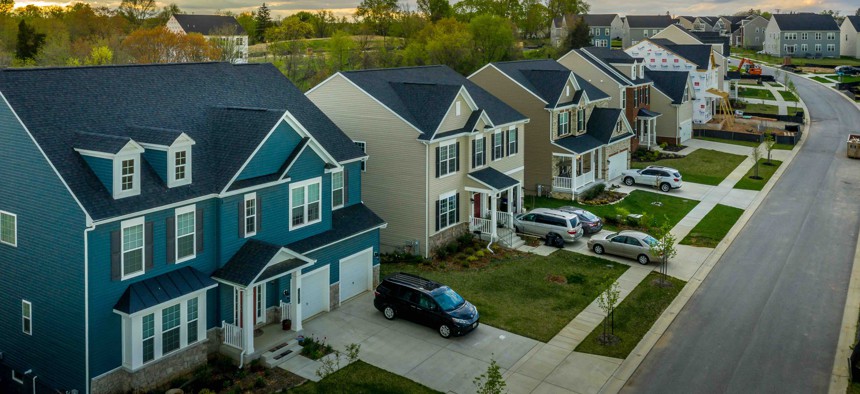Home Sale Data Raises Doubts Virus is Driving Wide Exodus From Cities

Shutterstock

Connecting state and local government leaders
But there are some pockets of the U.S. where urban housing markets appear to be softer than the suburbs.
Despite reports and speculation in recent weeks about the coronavirus outbreak causing city dwellers to flee to suburbs or rural areas, a new analysis suggests that, so far, suburban and urban housing markets have largely been on similar trajectories during the pandemic.
Researchers with the real estate website Zillow found that, for the most part, suburban housing markets have not strengthened disproportionately faster than urban markets since the virus began upending the nation’s economy and daily life in February and March.
Each type of market has had about the same share of homes selling above asking prices, the analysis found. It also showed that urban and suburban areas are seeing similar changes in how long homes are for sale before an offer is accepted and in how many sales are pending.
“Both region types appear to be hot sellers’ markets right now,” the researchers wrote.
There are some exceptions, though. A notable one is San Francisco. There, for-sale housing inventory is up 96% compared to last year. Areas around the city haven’t seen the same shift.
In San Francisco, the analysis said, “the softening is clear as sellers inundate the market and buyers have not changed their pace to match.”
And in New York City, home value growth in urban ZIP codes slowed in June compared to pre-coronavirus levels, while suburban home values in the region were accelerating, the analysis found. But there are signs this trend was already happening before the virus.
New York and San Francisco are two of the nation’s most expensive housing markets. Both cities are also home to legions of office workers who have been working remotely during the pandemic.
Home prices in San Francisco have hardly collapsed to bargain levels. Compass, a real estate firm based in the city, said last month that median house prices there hit a new monthly high in June, at around $1.8 million, with demand strong for high-end property in particular.
Compass reported this month that the condominium market has been weaker in the city than the market for houses, with large complexes and high rises in certain neighborhoods most sluggish.
Across the northeast region of the United States, pending sales appear to be rebounding more slowly in and around cities than in the suburbs, but Zillow’s researchers suggest this likely has more to do with a limited supply of homes on the market, rather than slack demand from buyers.
The Zillow analysts also concluded that the share of people viewing suburban, rural and urban home listings hasn’t changed dramatically compared to last year. Similarly, there hasn’t been a clear rise in people searching for larger homes with more square footage.
The analysis did find signs that growth in rent prices in cities was cooling compared to suburbs. Across 43 major metro areas, there were 24 where rents rose faster in suburban ZIP codes than in urban ones between February and June.
Metros where suburban rent growth outpaced urban rents by the most included Memphis, Dallas, San Francisco, Sacramento and New York.
The full analysis can be found here.
Bill Lucia is a senior reporter for Route Fifty and is based in Olympia, Washington.

NEXT STORY: One State Offers Training To Help Teachers Combat Pandemic-Related Stress and Anxiety





